The Spirit of Neil Peart
Rush’s virtuoso drum hero lived by his own rules, to the very end. For the first time since Peart’s passing, his bandmates and widow discuss his legacy and his final years
By Brian Hiatt, RollingStone.com, January 7, 2021
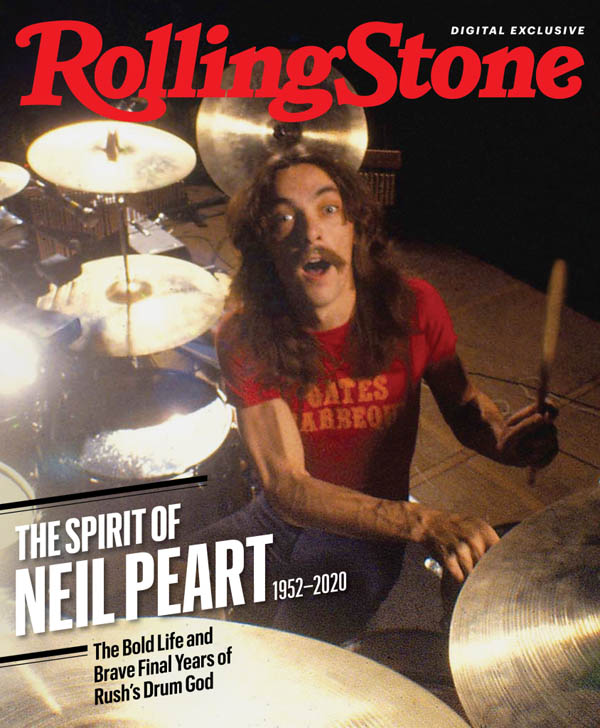
Neil Peart made it only 10 months into his hard-won retirement before he started to feel like something was wrong. Words were, for once, the problem. Peart, one-third of the Toronto band Rush, was one of the world's most worshipped drummers, unleashing his unearthly skills upon rotating drum kits that grew to encompass what seemed like every percussive possibility within human invention. Before band rehearsals for Rush tours, he'd practice on his own for weeks to ensure he could replicate his parts. His forearms bulged with muscle; his huge hands were calloused. But he was also the self-educated intellect behind Rush's singularly cerebral and philosophical lyrics, and the author of numerous books, specializing in memoir intertwined with motorcycle travelogues, all of it rendered in luminous detail.
Peart took constant notes, kept journals, sent emails that were more like Victorian-era correspondence, wrote pieces for drum magazines, and posted essays and book reviews on his website. Despite ending his formal education at age 17, he never stopped working toward a lifelong goal of reading "every great book ever written." He tended to use friends' birthdays as an excuse to send "a whole fucking story about his own life," as Rush singer-bassist Geddy Lee puts it, with a laugh.
"I do a lot of my thinking that way," Peart told me in 2015. "There is a quote from E.M. Forster. He used to say, ‘How do I know what I think until I see what I say?' For me, that's when I write."
Peart laid down his drumsticks after Rush's final show in August 2015, shortly before his 63rd birthday, but he intended to continue his writing career, which exacted less of a physical toll than pummeling a snare drum. He envisioned a quiet life. He'd work nine-to-five in what he liked to call his "man cave," a plush garage for his vintage-car collection that doubled as his office, just a block away from his home in Santa Monica, California. The rest of his time he'd spend with Carrie Nuttall, his wife of 20 years, and his elementary-school-age daughter, Olivia, who adored him. He planned to spend summers with them at his spectacular lakeside country property in Quebec, not far from the former site of Le Studio, the picturesque spot where Rush recorded Moving Pictures and other albums.
Before Rush's final tour began, Peart got a taste of the day-to-day existence he wanted. He ached to return to it, a rock star pining after mundanity like a cubicle drone daydreaming of living in the limelight. "It was awfully hard for me to turn away from a contented domestic life, a contented creative life," he told me in 2015, sipping Macallan on ice in his garage just before the tour. "I'd wait till Olivia went to school in the morning and then come over here. I'm an early riser, as she is. I'd go pick up lunch and come back here. And again, I never take it for granted. I'll be walking down Olympic to Starbucks or to Subway or whatever, thinking, ‘Isn't this great?'"
After the tour, when Peart wasn't working in his man cave, he volunteered for library time at Olivia's school. "Olivia was thrilled," says Nuttall. "She got to see Daddy at school all the time." At night, he'd come home and cook family dinners. "He was living his life exactly the way he wanted for the first time in decades, probably," she says. "It was a very sweet, content time ... and then the gods, or whatever you want to call it, snatched it all away."
"I just feel so bad," says Lee, "that he had so little time to live out what he fought so hard to get."
Peart started doing newspaper crossword puzzles back in the early Seventies, when he traveled to England from his native Canada to make it as a drummer, only to end up as the manager of a souvenir shop, with time to kill on a tube commute. For the past couple of decades, he made a ritual of whipping through the New York Times Sunday puzzle. In June 2016, he was baffled to find himself struggling with that task. "He couldn't figure it out," says Rush's longtime manager, Ray Danniels. " ‘What was the matter?'"
Peart kept his concern to himself, but by summer, he was showing signs of what Nuttall assumed to be depression. She broached the subject with Danniels during a visit to the manager's house in Muskoka, Ontario. "I was like, ‘Carrie, he got everything he wants,'" Danniels recalls. "‘He won. He got his freedom. He got a huge paycheck off the last tour. This is not depression.'"
In late August, Nuttall and Peart's mother both noticed that he was unusually quiet. When he did speak, he started "making mistakes with his words," as he later told his bandmates. He rushed to a doctor, and after an MRI, ended up in surgery. The diagnosis was grim: glioblastoma, an aggressive brain cancer with an average survival time of roughly 12 to 18 months.
Genetic testing of Peart's cancer suggested it was unusually treatable, and Peart lived until January 7th, 2020, more than three years after his diagnosis, which, in the case of this illness, qualified him as a "long-term survivor."
"Three and a half years later," says Lee, "he was still having a smoke on the porch. So he said a big ‘Fuck you' to the Big C as long as he could."
Shortly before the surgery, Peart placed an uncharacteristic FaceTime call to Alex Lifeson, on the Rush guitarist's birthday. "It was so unusual to get a call from him, because he was never comfortable on the phone," says Lifeson. "You'd get these beautiful emails from him. But he wasn't that crazy about talking to anybody. I was in shock. But I could tell there was something weird. I thought maybe it was a difficulty with a connection or something. But he just didn't seem like he normally was. And I kept thinking about it afterwards."
A couple of weeks later, Peart sent an email to his bandmates with the news. He didn't pull any punches. "He basically blurted it out," Lee recalls. "‘I have a brain tumor. I'm not joking.'"
Lifeson was at a golf course when he got the message. "I think I started crying right there," he says.
"You go into fight-or-flight mode," Lee says. For Lifeson and Lee, the priority became finding chances to see their friend, who lived far from their mutual home base of Toronto.
Peart handled his illness with heroic strength and stoicism, friends say, even as he fought to survive. "He was a tough man," says Lee. "He was nothing if not stoic, that man. ... He was pissed off, obviously. But he had to accept so much horrible shit. He got very good at accepting shitty news. And he was OK with it. He was going to do his best to stick around as long as he could, for the sake of his family. And he did unbelievably well. ... He accepted his fate, certainly more gracefully than I would."
There was a certain fatalism to Peart, who wrote song after song about the randomness of the universe, and then saw the events of his own life prove it to him. In 1997, his daughter Selena died in a car accident on the way to college; his common-law wife, Jackie, died of cancer soon after. Peart's loss was so all-encompassing that despite his rationalist bent, he couldn't help wondering whether he'd somehow been cursed.
"My daughter died at 19, and my wife died at 42, and I'm 62 and I'm still going," he told me in 2015, discussing his refusal to consider quitting smoking (which is not believed to be a likely cause of glioblastoma). "How many people have died younger than me? How many drummers have died younger than me? I'm already in bonus time. ... Something is gonna kill me. Look, I ride motorcycles. I drive fast cars. I fly around a lot in airplanes. It's a dangerous life out there. I like what one old-timer said about motorcycling: ‘If you love motorcycling enough, it's gonna kill you. The trick is to survive long enough that something else kills you first.'"
For all of that bravado, he couldn't abide the idea of leaving his daughter behind. "That bothered him terribly," Danniels says. "It bothered him that he had come full circle. At first, he felt the pain of having lost a child. And now he was leaving a child."
Peart had his own mourning process to get through, says Nuttall, "for the future he was not going to have and for everything he would miss out on with Olivia, and with me, and with life itself. If anyone lived life to the fullest, it was Neil. And there was still much he wanted to do. When everyone says, ‘Oh, he was so stoic and accepted his fate,' and all that? Yes, he did. But it also broke his heart."
Peart was determined to make the most of his remaining time, just as he had always sought to maximize his days. "What's the most excellent thing I can do today?" he used to ask himself. The answer often meant roaring through a national park on a BMW motorcycle before playing drums in an arena. ("You can do a lot in a lifetime," he wrote in the lyrics to "Marathon," one of Rush's most powerful songs, "if you don't burn out too fast.") That was one of his signatures as a drummer, too, cramming an improbable amount of rhythmic information into each bar of music; he made his living by pushing the limits of time.
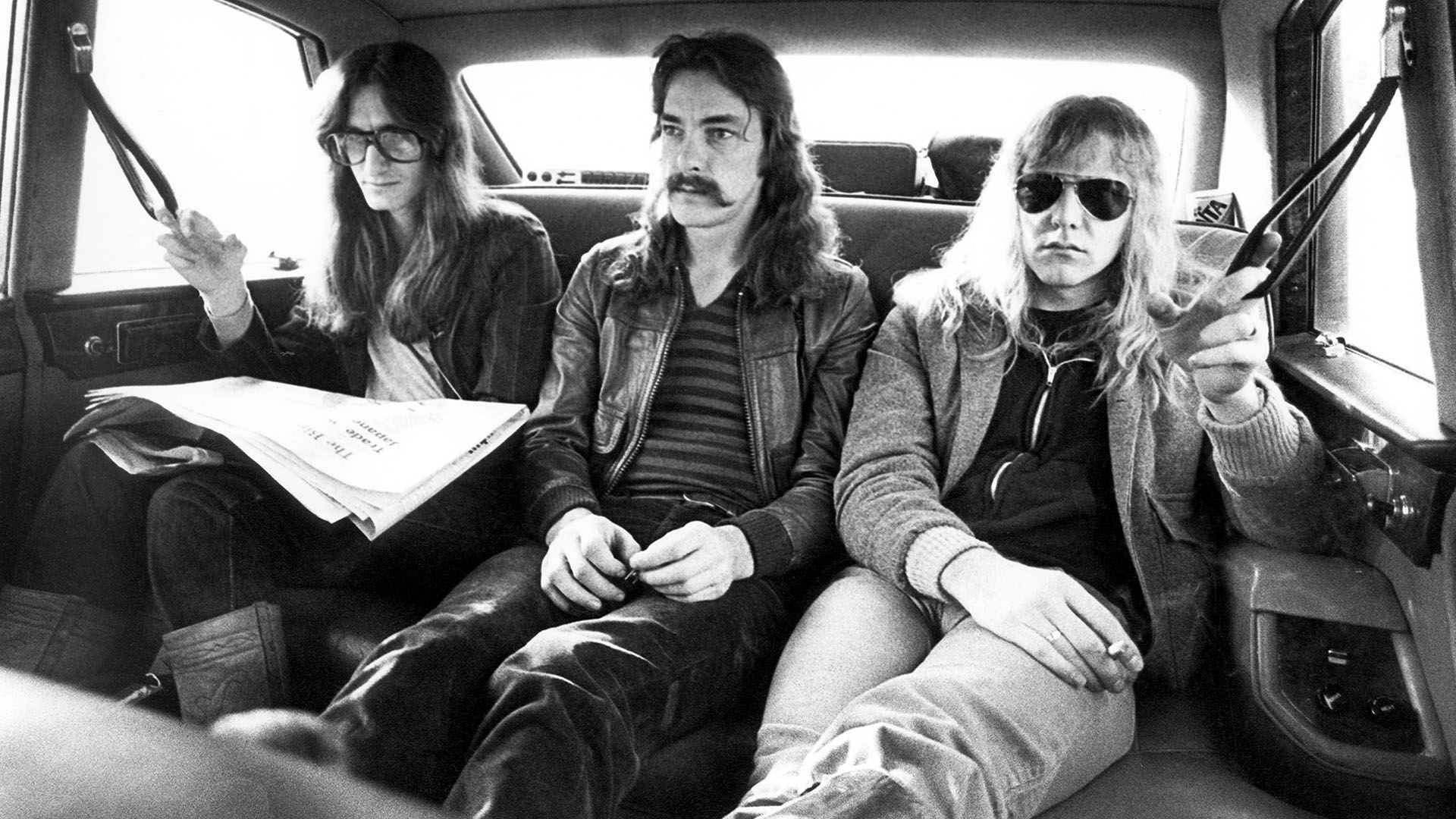
"He lived incredibly deeply and richly," says one of his close friends, former Jethro Tull drummer Doane Perry. "Which might mean being on his own, reading a book at his place up in Canada on the lake - that was just as fully engaging as being onstage in front of tens of thousands of people."
Peart's lifelong need for privacy grew stronger. His illness was a secret kept among a small circle of friends, who managed to guard their knowledge to the very end. For Lee and Lifeson, who were doing interviews and fielding calls from friends and peers about rumors, the burden of concealment was heavy. "Neil asked us not to discuss it with anyone," says Lifeson. "He just wanted to be in control of it. The last thing in the world he would want is people sitting on his sidewalk or driveway singing ‘Closer to the Heart' or something. That was a great fear of his. He didn't want that attention at all. And it was definitely difficult to lie to people or to sidestep or deflect somehow. It was really difficult."
Peart always dismissed unnecessary discussion of unpleasant subjects with a hand wave and a hearty "never mind," and that's what friends heard if they tried bringing up his illness or treatment. "He didn't want to waste his remaining time talking about shit like that," says Lee. "He wanted to have fun with us. And he wanted to talk about real things right up to the very end."
Peart never complained, Lee jokes, unless he "ran out of smokes." "One time I arrived without any alcohol," adds Lee, a serious wine collector. "And I'm famous for arriving at his house with what he used to call ‘your bucket of wine.' And I didn't bring it this one time. And he was just so appalled. So of course, the next day, Alex and I went to a wine store and made sure we arrived with a bucket of wine. And all was good again."
Peart also overcame a lifelong aversion to retrospection and nostalgia, spending a significant amount of time listening to his catalog with Rush. "When we talk about his intense desire to be learning," says another close friend, Vertical Horizon frontman Matt Scannell, "very hand in hand with that spirit is, ‘What's new? What next?' Back when I'd send him mix CDs, if it was old, he wasn't interested. But I thought it was beautiful that he found something to enjoy about looking back, whereas before, it was kind of anathema."
"I don't think any of us listen to a lot of our old music," says Lifeson. "It's all been done and played. But my guess is that he was just reviewing some of the things that he accomplished, in terms of music, anyways. And I think he was a little surprised at how well it turned out. I think that happens, you kind of forget. It was interesting to see him smile and feel really good about that. And when he still could write to us, he wrote about how he was reviewing some of our older music and how it stood up for him."
Lee wasn't surprised. "Knowing Neil the way I do," he says, "and knowing that he knew how much time he had left, I think it was a natural thing for him to review the work of his life. And he was finding himself very proud of how he had spent a big chunk of his life. And he wanted to share that with Alex and I. Whenever we saw him, he wanted to talk about that. He wanted us to know that he was proud."
Fly By Night, Peart's debut album with Rush, begins with the intro to "Anthem": guitar, bass, and drums interlocked in a brutally syncopated riff, in 7/8 time, with some of the most crisp high-hat work the rock world had ever heard. From there, the song became a ferocious salute to Ayn Rand-inspired individualism. The Rand influence was powerful at that point for a young Peart, adhering to his public image for decades, but he'd soon regard it as philosophic and intellectual training wheels, at best. He'd eventually call himself a "left-wing libertarian" or "bleeding-heart libertarian," and tell Rolling Stone in 2015 that he planned to vote Democratic after gaining his U.S. citizenship.
On Rush's previous album, recorded with a far more limited drummer, John Rutsey, Lee had been singing come-ons ("Hey, baby, it's a quarter to eight/I feel I'm in the mood!") over bar-band Zeppelinisms; now he was screeching objectivist philosophy over thrilling, twisty prog-metal, a genre his band was inventing moment by moment. "We wanted to be the most complex hard-rock band out there, that was our goal," Lee told me in 2015. "So I knew from the very first audition that this was the drummer of our dreams."
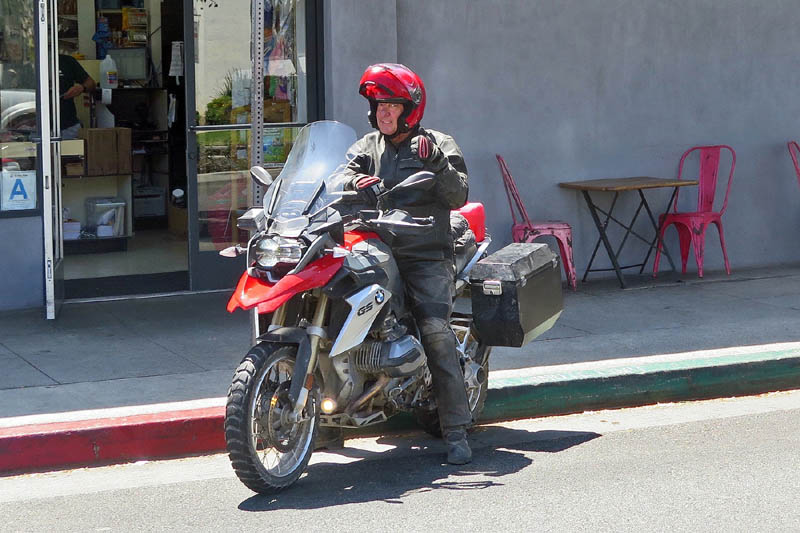
Peart spent his infancy on a family farm, before his father - who would eventually run his own auto-parts business - moved the family to Port Dalhousie, a suburb of the small city of St. Catharines, Ontario. Until his teenage years, Peart's childhood was relatively idyllic. He spent much of his time outdoors, cultivating what became a lifelong connection with nature. "Where he was really most comfortable was in nature and in quiet and a degree of solitude," says his friend Doane Perry.
There was one deeply traumatic incident. Swimming in Lake Ontario when he was around 10, Peart grew tired and tried to grab onto a buoyed raft, before some older boys decided it would be funny to keep him off of it. Peart flailed in the water, feeling himself start to drown. At the last minute, two classmates saved his life. Peart was left with a certain distrust of strangers, and would flash back to the terror of that moment years later, when he was unlucky enough to be caught in a crush of fans. He developed a phobia of feeling "trapped" that would shape his profound discomfort with fame and his constant need to escape the cloistered world of rock touring.
Peart was brilliant enough to skip two grades, starting high school at 12. He began drum lessons, practicing for a full year without an actual kit. Peart's first spark of interest in drums came with a viewing of The Gene Krupa Story, a biopic about the big-band drummer; big-band jazz was Peart's dad's favorite music, and Peart would take a serious stab at playing it later in life. Keith Moon, the Who's wild-man drummer, became his hero, but as Peart's skills developed, he realized he didn't actually want to play like Moon. The chaos didn't suit him. Peart would find a way to embody Moon's energy while staying true to his own spirit, playing parts that were even flashier and more dramatic, but also more precise and composed, following a sort of three-dimensional geometric logic. (Ever restless, Peart, in his later years, reversed course and worked on his improvisational side.)
Teenage Peart grew his hair long and started wearing a cape and purple shoes. Local jocks were unimpressed. "I was totally happy up until the teenage years," he told me, "when suddenly - I didn't know I was a freak, but the world made me aware of it." He was playing in his first bands and becoming completely obsessed with his instrument. He'd only stop practicing when his parents made him. "From the time I started playing drums, there was only drums and music," Peart said. "I did great in school up until that point, and then it just didn't matter."
He dropped out at 17, and by the next year made his way to London. He spent 18 frustrating months there, returning to Canada with very different ideas about his musical career. He decided he couldn't stand playing music he didn't believe in for money, and would rather work a day job and play for fun. "I set out to never betray the values that 16-year-old had, to never sell out, to never bow to the man," he told me.
He was offended by what he saw as pandering and corrupt commercialism in the rock world; there's genuine contempt in the line about the "sound of salesmen" he'd later write in "The Spirit of Radio." After a stint at the local record store, where he worked with the brothers of his future wife, Jackie Taylor, he settled into a job as parts manager at his father's business, helping to computerize the inventory system.
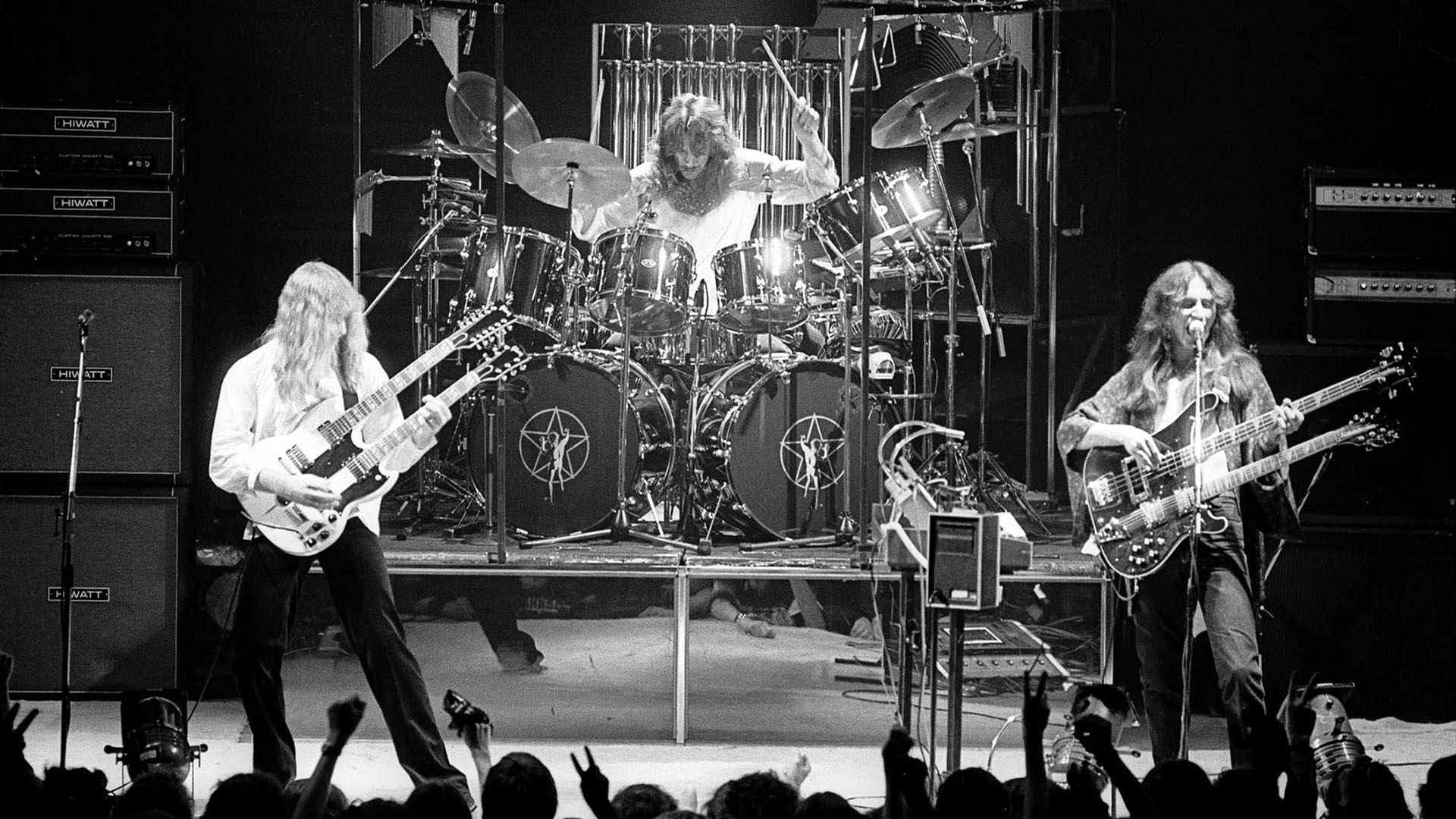
Peart's first attempt at ordinary life lasted barely a year before he was recruited to audition for a Toronto band already signed to a major label. Peart joined Rush, and began 40 years of recording and touring. "You look at him in photographs in the early days," says Lee, "and he had a great smile. He was very happy for a very long time. Only after years of grueling road work did that smile start to wear away a little bit."
From the beginning, though, Peart found the downtime on the road stultifying. He started putting it to use, plowing through ever-growing stacks of paperback books, filling in the gaps of his education. At the same time, he laced Rush's early albums with some of rock's oddest and most colorful lyrics. ("I have dined on honeydew!" Lee famously yelps on the 1977 classic "Xanadu.") In his songwriting, Peart drew at first on his love of science fiction, fantasy, and Rand, before shifting to more earthbound concerns by the Eighties.
Rolling with some of those early lyrics was a "leap of faith" for the band, Lee acknowledges: "Sometimes you weren't into it! And you didn't want to do it. You had to talk about it." As the years went by, the process became ever more collaborative. "For many years," Lee adds, "Neil sat beside me in the control room when we listened back to vocals, and we'd talk about something that could be improved and he would rewrite it on the spot." Later, Lee might pick just a few lines he liked, and Peart would rewrite songs around them.
The band's breakthrough, 1976's monumental, riff-happy rock operetta "2112," was dead serious in its furious salute to personal freedom; the priests of Syrinx, who controlled everything in their dystopian society, were a thin stand-in for record execs who wanted Rush to sound more like Bad Company (and for teenage fans, parents who just didn't understand).
There was more humor in the band and in Peart's Seventies writing than some of his critics understood - 1975's "By-Tor and the Snow Dog" was inspired, for instance, by the nicknames of two dogs Danniels owned. "I remember one morning saying to Geddy, wouldn't it be funny if we did a fantasy piece on By-Tor and the Snow Dog?" Peart told me. Even in their peak-prog moment, 1978's Hemispheres, the band was self-aware enough to give the wry subtitle "An Exercise in Self-Indulgence" to "La Villa Strangiato," a twisty masterpiece of an instrumental.
"The Spirit of Radio," from 1979's Permanent Waves, lived up to its title, winning Rush extensive FM airplay, followed by their biggest-ever album, Moving Pictures, with Peart's awe-inspiring performance on "Tom Sawyer," highlighted by some of the most indelible drum fills in rock history. Rush were now huge, and Peart wasn't enjoying it. When he heard Roger Waters' depiction of rock alienation on Pink Floyd's The Wall, he wrote Waters a letter of appreciation for capturing his own feelings so well.
His friend Matt Stone, South Park's co-creator, was stunned to find how ill-at-ease Peart could be about being recognized in public, even late in his career. "He was a really weird guy about his fame," Stone says. (For that reason, Peart particularly loved Stone's Halloween parties, where he could meet people while in disguise - which, one year, meant full drag.)
Peart developed strategies to break free. "I carried a bicycle on the tour bus and sometimes on days off I'd go riding in the country," he told me, "and then, if the cities were a hundred miles apart, I could do it on my own, and that was the biggest thrill. The whole entourage left, and I'd be in the little town in a motel room and on my own, and in those days no cellphones or anything. Just me and my bicycle." He took extracurricular trips, too, riding through Africa (toting, on one trip, a copy of Aristotle's Ethics and a collection of Vincent Van Gogh's letters) and China. The deprivation he witnessed in Africa was transformative, pushing the "bleeding heart" part of his libertarianism to the surface.
Peart tried to end Rush's touring days as early as 1989, when his daughter Selena was 11 years old. "After much wrestling in my own mind I came to the realization, if I'm going to call myself a musician, then I'm going to have to perform live," he told me. "I like rehearsing much better than performing. It's got all the challenge and gratification, but without the pressure. And you don't have to leave home. Even in '89, I was thinking, ‘Imagine if they had a hologram, so every day I just went to one place and played my heart out, and then went home.'"
Peart felt intense pressure, night after night, to live up to his own reputation. "He never rated himself as highly as everyone else did," says Police drummer Stewart Copeland, another friend. "But he did very much feel the responsibility that he carried to be the god of drums. Kind of a burden, actually."
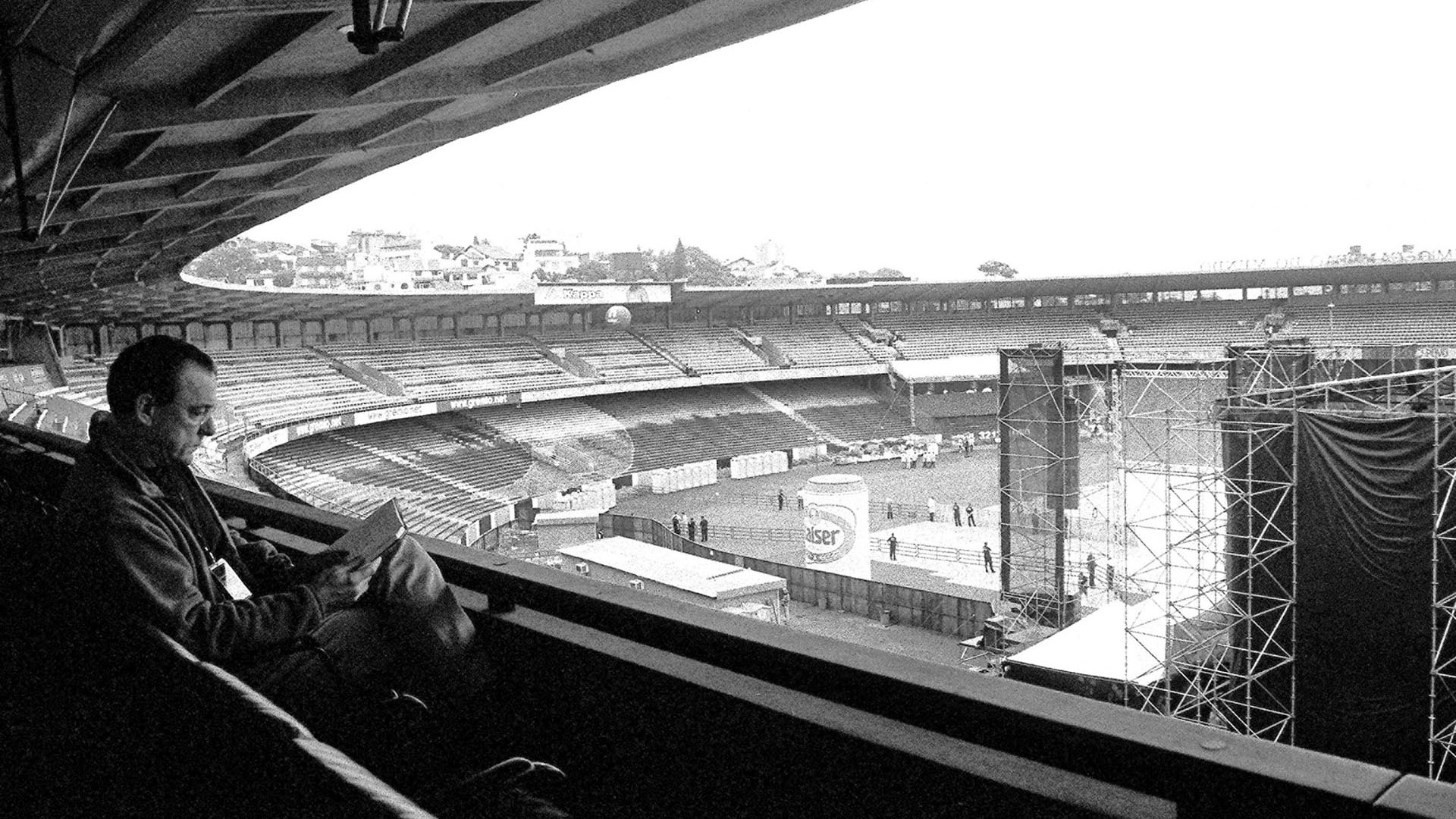
In May 1994, at the Power Station recording studio in New York, Peart gathered together great rock and jazz drummers, from Steve Gadd to Matt Sorum to Max Roach, for a tribute album he was producing for the great swing drummer Buddy Rich. Peart noticed one of the players, Steve Smith, had improved strikingly since the last time he had seen him, and learned that he studied with the jazz guru Freddie Gruber. In the year of his 42nd birthday, while he was already widely considered to be the greatest rock drummer alive, Peart sought out Gruber and started taking drum lessons. "What is a master but a master student?" Peart told Rolling Stone in 2012.
He was convinced that years of playing along with sequencers for the more synth-y songs in Rush's Eighties catalog had stiffened his drumming, and he wanted to loosen back up. (For all of his efforts and mastery, there were some areas even Neil Peart couldn't conquer: "To be honest, I am not sure that Neil ever fully ‘got' the jazz high-hat thing," Peter Erskine, who took over as Peart's teacher in the 2000s, wrote affectionately.)
Rush as a whole were feeling some creative exhaustion on their next album, 1996's Test for Echo, but Peart felt he'd done his best playing to date, thanks to a revamped sense of time. He also found a new way to make touring bearable, even pleasurable, traveling from date to date on his BMW motorcycle. "I'm out in the real world every day," he told me, "seeing people at work and going about their daily life, and having little conversations in rest areas and gas stations and motels, and all the American life every day." Five years would pass before the band toured again.
On August 10th, 1997, Peart and his wife Jackie helped 19-year-old Selena pack up her car as she prepared to drive to the University of Toronto to begin her sophomore year. Her expected arrival time came and went without a phone call. A few hours later, a police officer came to Peart's door. At Selena's funeral, Peart told his bandmates to consider him retired, and Lifeson and Lee assumed the band was over. Jackie was shattered, and within months received a diagnosis of metastatic cancer. She responded "almost gratefully" to the news, Peart wrote. Jackie died in June 1998. She is buried next to their daughter.
Peart left everything behind, got on his motorcycle and rode. He felt alienated from himself; at one point, he watched one of his old instructional drum videos and felt like he was looking at a different person. There was part of him left, though, "a little baby soul," and he did his best to nurture it. There were times when he sought the "numb refuge of drugs and alcohol," as he put it in his memoir of the period, Ghost Rider. Midway through his journey, before embarking on a run through Mexico, Peart broke out of his isolation for a week, spending some time in Los Angeles with Rush photographer Andrew MacNaughtan.
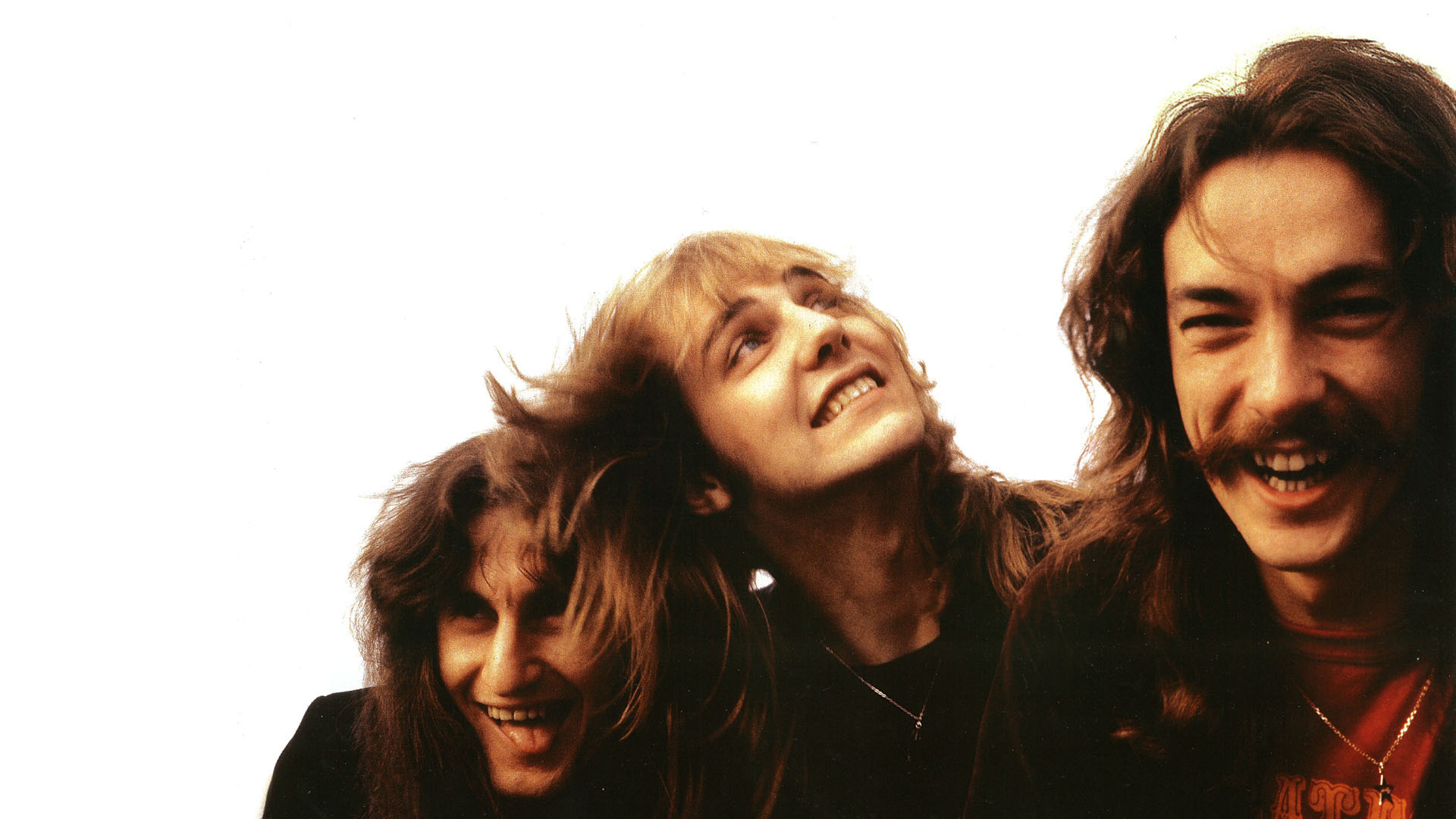
One of the few things that made him laugh during that period was South Park, so Peart was pleased when MacNaughtan introduced him to Stone. "Andrew was like, ‘Neil's coming to town,'" Stone recalls. "‘Let's get wasted and hang out.' I got some party materials and went up to the Hollywood Hills. Because of what happened, it was, ‘Don't talk about girls. Don't talk about children.' So we talked about art and philosophy and rock & roll and travel. ... But it was a guy who was just fucking sad."
Over the course of more than a year and 55,000 miles' worth of motorcycle trips, Peart began to heal. He ended up in Southern California for good, ready to start over. "When I first moved here it was remarkable, because my life was one suitcase, a bicycle, and a boom box," he told me. "All the possessions I had. I rented a little apartment by the Santa Monica Pier. And I joined the Y here. I would do yoga or the Y every day, ride around on my bicycle, come home and listen to my boom box, and it was great." Through MacNaughtan, he met Carrie Nuttall, a gifted photographer, and fell in love. They married in 2000. Peart called the band and told them he was ready to get back to work.
Rush were as popular as they had ever been by their 40th anniversary in 2015, having been belatedly absorbed into the classic-rock and pop-culture canons. After many stylistic reinventions, they had re-embraced their core approach with what would turn out to be their last studio release, the triumphant concept album Clockwork Angels, in 2012.
But Peart had again grown reluctant to tour. He and Olivia, now five, were very close, and during the band's 2012-13 tour, she found his absences painful and disturbing. Peart relented only because Lifeson developed arthritis, and the guitarist worried that it might be his last chance to play. "Realizing I was trapped," Peart wrote, "I got back to my hotel that night and stomped around the room in a mighty rage and an attack of extreme Tourette's." After the tantrum subsided, he decided to follow an adage of Freddie Gruber's: "It is what it is. Deal with it."
As the tour went on, Lifeson started feeling better. It was Peart who suffered. He kept up his motorcycle routine, a 62-year-old man riding hundreds of miles a day, sometimes in the rain, before playing three-hour concerts. He developed a painful infection in one of his feet, among other issues. "He could barely walk to the stage," says Lifeson. "They got him a golf cart to drive him to the stage. And he played a three-hour show, at the intensity he played every single show. I mean, that was amazing."
At the beginning of the tour, Peart was feeling good, and signaled to Danniels that he might be open to adding more shows. His feelings changed along with his physical condition. "Partway through the second run," says Danniels, "he made it clear to me, ‘I can't do any more. I don't want to do any more.' And, you know, I was frustrated." So were Lee and Lifeson, who were in the middle of one of Rush's greatest tours, with a fan's-dream set list that ran through the band's catalog in reverse chronological order.
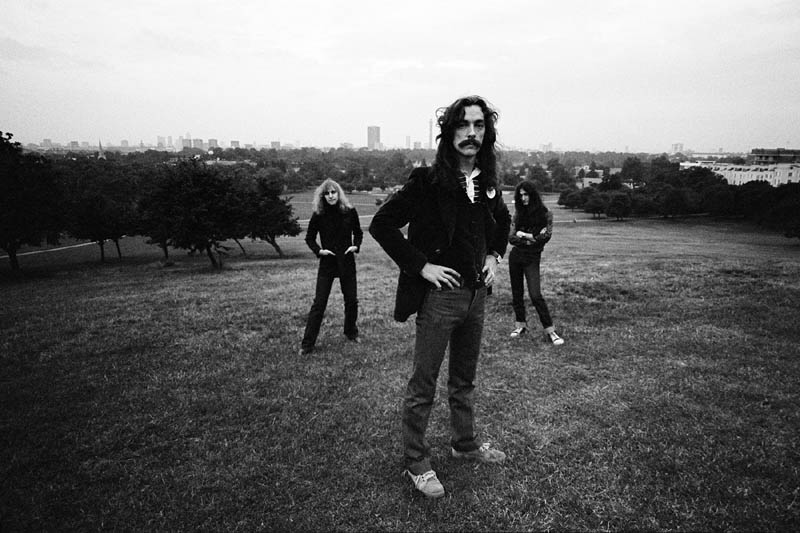
"My relationship with him had been one of coaxing," Danniels adds. "But even getting angry couldn't move him. He wasn't a racehorse anymore. He was a mule. The mule wasn't going to move. ... I eventually let go. I realized I was going to negatively affect my friendship with him."
The band never really spoke about the significance of what was happening at Rush's final show, at a sold-out Forum in L.A. At least not aloud. "The conversation took place onstage," says Lee, "all through the show, in our eyes." Peart made it clear that something unique, and most likely final, was happening when he came up to the front of the stage with his bandmates at the show's conclusion. It was the first time he had done so in 40 years. "That was a beautiful moment," Lee says.
For all the finality, there was always some hope that the band would find some way to continue. "Do I think Neil would have done something again?" says Danniels. "Yes. He would have one day. [Something] different, whether it was a residency in Vegas or whatever. I think, yes, before the illness. That's what stopped this thing from ever coming back."
The years of Peart's illness were filled with uncertainty. Early on, he was in remission for a year before the cancer returned. "In a way, every time you said goodbye to him, you said goodbye," says Lee. "Because you honestly didn't know. Even when he was doing pretty well. It was three and a half years of really not knowing. The timeline kept moving. So when you said goodbye, it was always a giant hug."
During one visit, Lifeson stayed in L.A. by himself for a few days. "And when I left, I gave him a big hug and a kiss," the guitarist says. "And he looked at me and said, ‘That says everything.' And, oh, my God. And that, for me, was when [I said goodbye]. I saw him a couple times afterwards, but I can see him and feel that moment."
The final time Lee and Lifeson saw their bandmate, they were able to have one last, glorious boozy dinner with him and Nuttall. "We were laughing our heads off," says Lifeson. "We were telling jokes and reminiscing about different gigs and tours and crew members and the kind of stuff we always did sitting around a dressing room or on a bus. And it just felt so natural and right and complete."
Peart had some degree of impairment as the disease progressed, but "really, right up to the end, he was in there," says Perry. "He was absolutely in there, taking things in." (A report after his death that Peart was confined to a wheelchair and unable to speak was entirely false, friends said.) He kept up his routine, heading to his man cave each weekday, seeing friends there, even throwing himself a final birthday party in the fall of 2019.
When Peart could no longer drive, his friends Michael Mosbach and Juan Lopez shuttled him there. "I'm just really grateful and proud," says Nuttall, "that I was able to provide Neil with the ability to still do all those things he wanted to do, really up until the very end. But I couldn't have done it without Juan and Michael."
Peart never played drums again after Rush's final show. But there was a drum kit in his house. It belonged to Olivia, who was taking lessons and seriously pursuing the instrument. Peart's parents had allowed him to set up his drums in their living room, and he did the same for Olivia. It said everything about Peart that his daughter wasn't shy about tackling the instrument in the shadow of his own achievements. "Neil immediately said, ‘She has it,'" says Nuttall. "She did inherit what he had. And of course, that thrilled him. ... He made a huge effort not to make her feel intimidated by him - he didn't sit there and stare at her having her lesson. He would be out of sight, but he'd be listening."
With Peart's passing closely followed by a global catastrophe, it's been a dark and surreal year for his friends and family. In a world frozen in place, it's been hard to process grief. "It feels like it wasn't very long ago," says Lee. There was more drama in the Rush camp, too. Lifeson became terribly ill in March, and was hospitalized for a few days and placed on oxygen. He tested negative for Covid-19 but positive for the flu, though he did lose his sense of taste and smell while he was sick. Lifeson has since fully recovered.
A planned private Toronto memorial for Peart had to be called off, but there was a small dinner with the band and friends in Los Angeles, and a formal memorial there hosted by his widow weeks later. "Carrie picked a beautiful place overlooking the Pacific," says Perry. "It was a beautiful afternoon. It was a healing time for everyone. Carrie put together a wonderful slide show of pictures, going right back to when he was a boy."
Some of Peart's friends - Scannell, Perry, Copeland, prose collaborator Kevin Anderson - spoke in front of an audience that included his bandmates and other famous drummers: Taylor Hawkins of Foo Fighters, the Red Hot Chili Peppers' Chad Smith, Tool's Danny Carey. In Copeland's speech, he noted that thanks to Peart, all of the drummers in attendance shared the indignity of meeting fans who'd tell them, "You're my second-favorite drummer!"
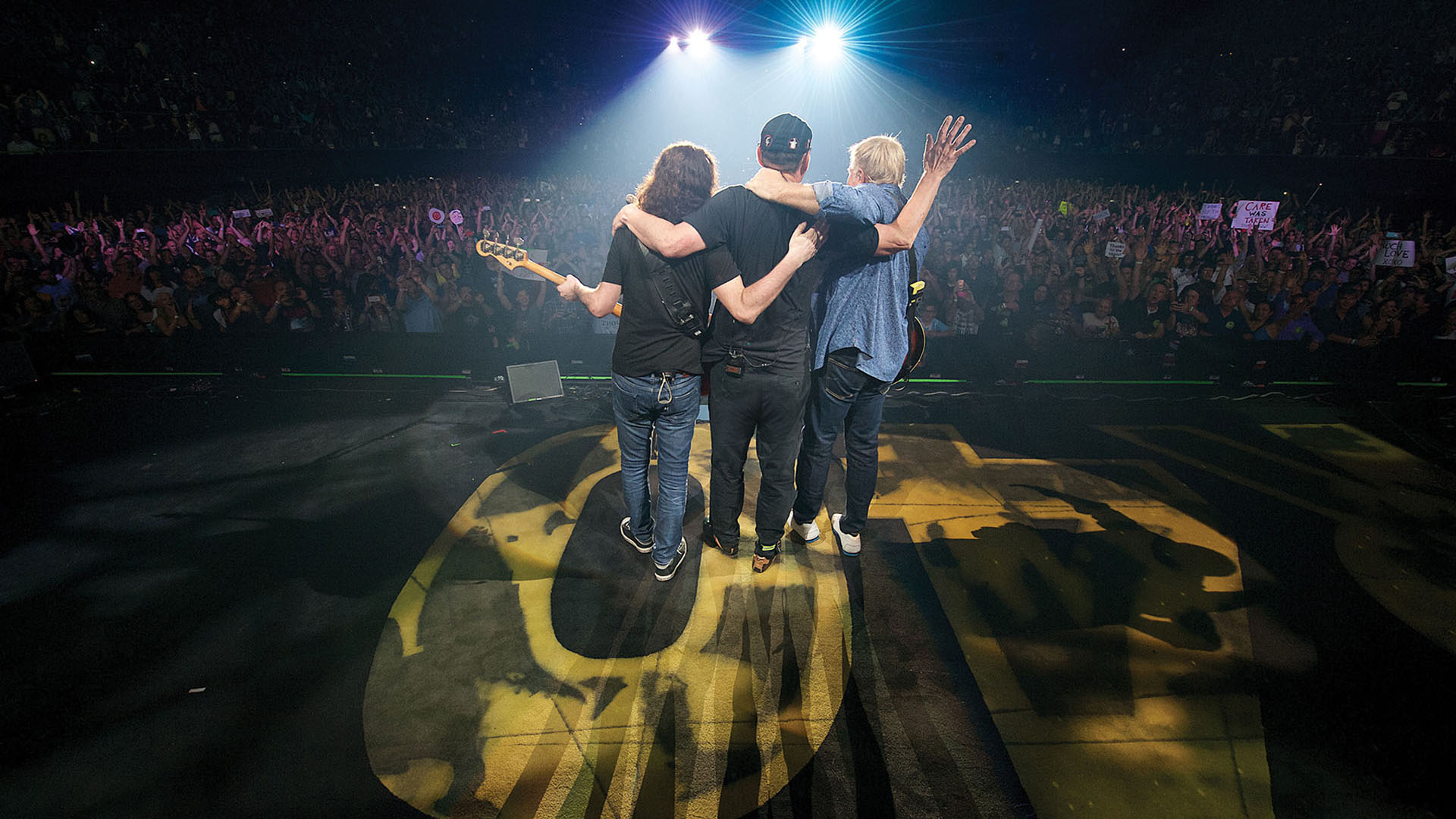
At the end, Olivia Peart, age 11, got up and talked about her dad. "She was wonderful," Perry says. "She's really Neil's daughter, a really smart little girl."
Olivia and her mother are, of course, still struggling with the loss, compounded by pandemic-era isolation. The Canadian border has been largely closed for months, separating them from Peart's extended family. "Our lives were turned upside down when Neil died," says Nuttall, who spent Christmas alone with her daughter. "And then eight weeks later we were alone at home together, and it's been tough. ... We both think about him every single day, and talk about him every single day, and miss him every day." Through it all, Olivia is continuing her drum lessons.
Since Peart's passing, Lee and Lifeson have found little interest in picking up their instruments. "I love playing, and I never, ever wanted to stop," says Lifeson, during an emotional joint video call with Lee. Lifeson was in his studio, where nearly a dozen gleaming guitars hung behind him. "And I thought, you know, ‘One day, when I'm just sitting around shitting my pants, I'll still want to play guitar.' And that's kind of gone now. After he died, it just didn't seem important. But I think it'll come back."
"For the longest time," says Lee, "I didn't have any heart to play. ... I still feel there's music in me and there's music in Big Al, but there's no hurry to do any of that."
Even as they mourn their friend, Lee and Lifeson are adjusting to the idea that Rush, too, is gone. "That's finished, right? That's over," Lee says. "I still am very proud of what we did. I don't know what I will do again in music. And I'm sure Al doesn't, whether it's together, apart, or whatever. But the music of Rush is always part of us. And I would never hesitate to play one of those songs in the right context. But at the same time, you have to give respect to what the three of us with Neil did together."
After the final Rush show, Peart stuck around the venue, instead of bolting off on his motorcycle. He was, for once, having a great time backstage. "He was ebullient," Lee says. Neil Peart had finished his work, held on to his standards, never betrayed his 16-year-old self. He was still playing at his peak.
"He felt like it was a job well done," says Scannell, who hung out with him that night. "And who could deny that?"